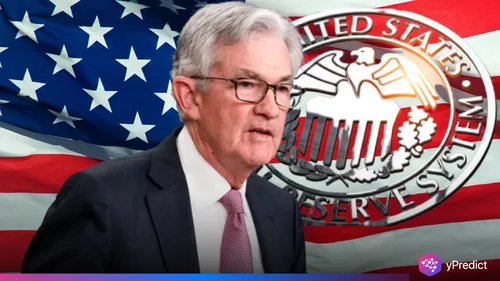
The Indian rupee may continue falling this week. Weak Asian currencies, poor foreign inflows, and strong dollar demand are key reasons. The rupee remains near its one-month low. No major positive trigger supports a rebound right now. Without fresh catalysts, the rupee is likely to weaken further.
The one-month NDF showed a flat to slightly weaker start on Monday. The rupee had closed at 86.1475 in the previous session. It dropped nearly 1 percent over the past two weeks. Weak local fundamentals and poor risk appetite are hurting investor confidence.
Offshore Investors Pull Back as Inflows Slow
Foreign portfolio inflows have started to decline, which has been a significant support for the rupee. In July alone, offshore investors sold more than $600 million in Indian equities. The massive inflows into equities of almost $4 billion in May and June would have provided temporary support for the currency.
The shift in sentiment is a reflection of growing caution seen among global investors as uncertainty surrounding U.S. trade policy uncertainty and geopolitical tensions rises. Weak foreign portfolio flows have essentially removed a key pillar noted in respect to the rupee making it more susceptible to external shocks.
Importers Boost Dollar Demand as Hedging Increases
Local demand for the dollar remains strong, especially from importers preparing for upcoming payments and short-term hedging. Bankers in Mumbai noted that corporates are actively buying dollars, further pressuring the rupee.
This sustained dollar demand is pushing the USD/INR pair higher, and with no immediate signs of a reversal in trend, traders expect the rupee to remain under stress. One currency trader remarked, “We’ve crossed 86, and it feels like a slow grind upward from here.”
Fading Hopes From the U.S.-India Trade Deal
Expectations that the upcoming U.S.-India trade deal might support the rupee are also fading. Traders say the potential agreement is unlikely to deliver any significant positive surprise for the Indian currency.
With political considerations dominating trade negotiations and a global trade slowdown looming, market participants don’t see the deal as a game-changer for the rupee. The lack of a meaningful catalyst has reinforced the currency’s downward bias.
Dollar Strength Adds to Rupee Pressure
To worsen the rupee’s issues, the U.S. dollar is continuing to strengthen. The dollar index had a 0.6% last week, adding to the previous week’s nearly 1% gain again. The dollar index was above 98.50 on Monday, reflecting continued investor confidence in the U.S. economy, coupled with a flight to safety due to the uncertainty regarding tariff decisions.
This rise in dollar strength has put most Asian currencies under pressure, not just the rupee. With the regional backdrop worsening, the Indian currency finds itself stuck in a negative cycle driven by both internal and external forces.
Global Events in Focus
Market focus shifts to some key global events this week, the European Central Bank rate decision and the China-European Union summit. In regard to the ECB, analysts think that it will be a “wait and see” approach before making any large rate moves ahead of the expected U.S. tariff announcements on August 1.
The week ahead will bring select global events that will indirectly influence currency markets and likely stimulate risk sentiment. In the case of the rupee, one unexpected global policy, trade announcement or rhetoric could create volatility but the general trend remains one of additional weakness.
Outlook Remains Cautious for the Indian Rupee
With all these factors in play, dollar demand may be higher, foreign inflows may be lower, and risks abroad may linger, and thus the rupee is unlikely to regain any meaningful strength in the near term. Given the absence of a strong and favorable catalyst, as well as external pressure from a rising dollar index, the evidence suggests that the Indian rupee will likely not regain its footing in the near term.
Unless investment trends change sharply or global risk subsides suddenly, we could see the rupee continuing to test lower levels for a while.







